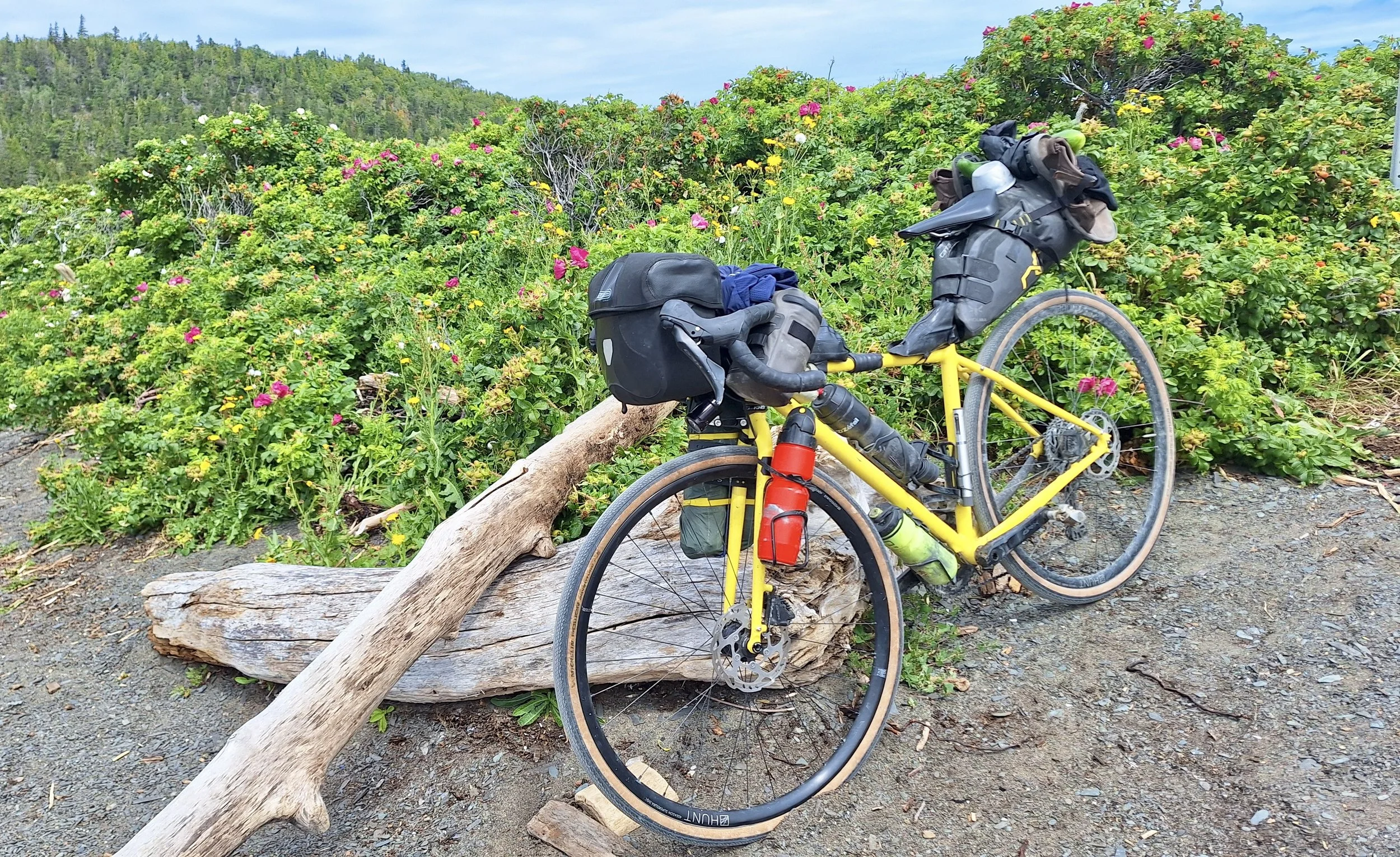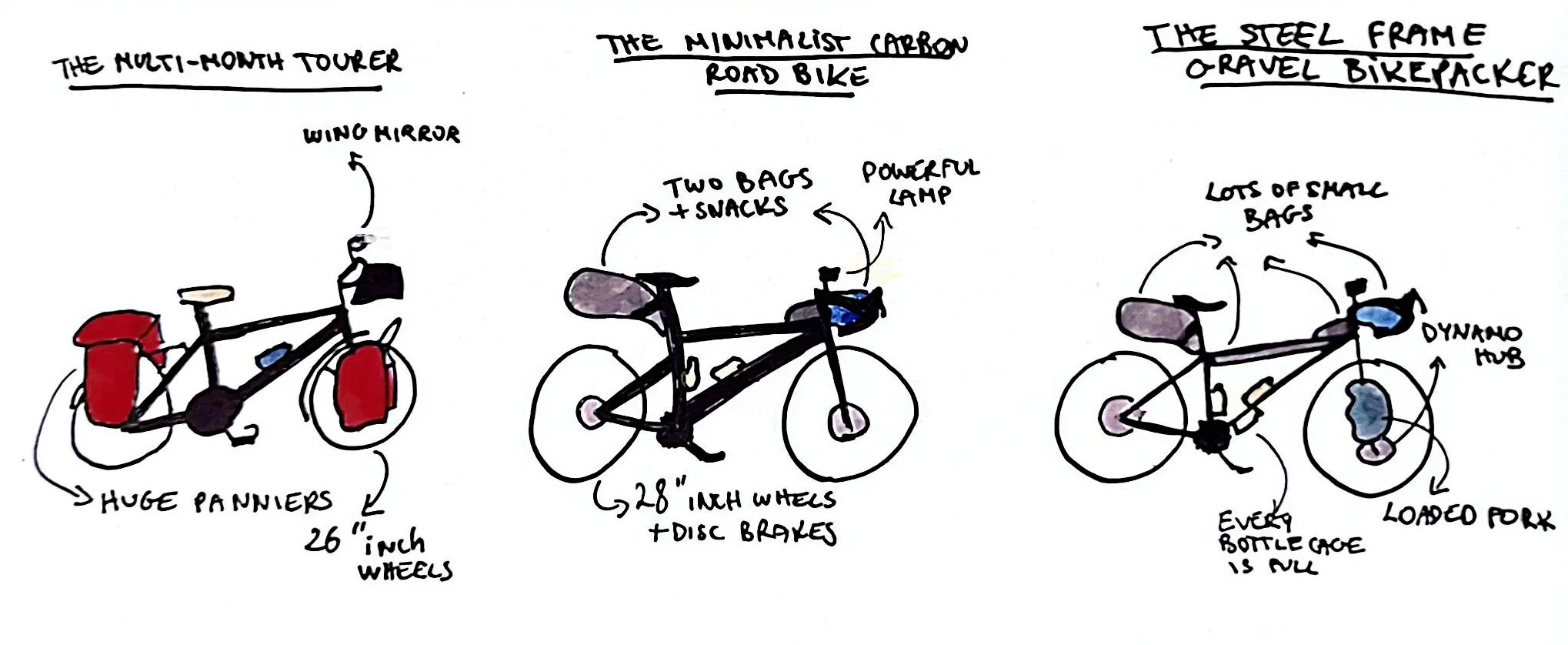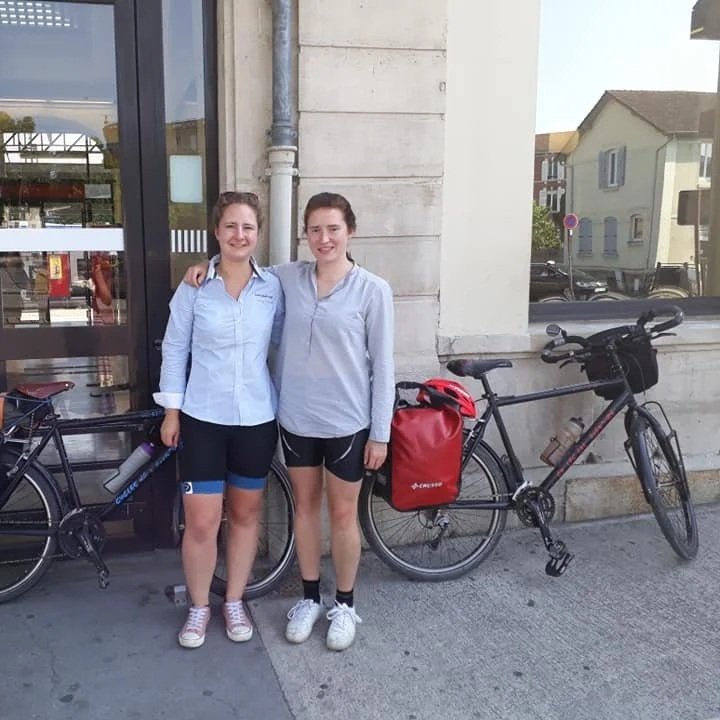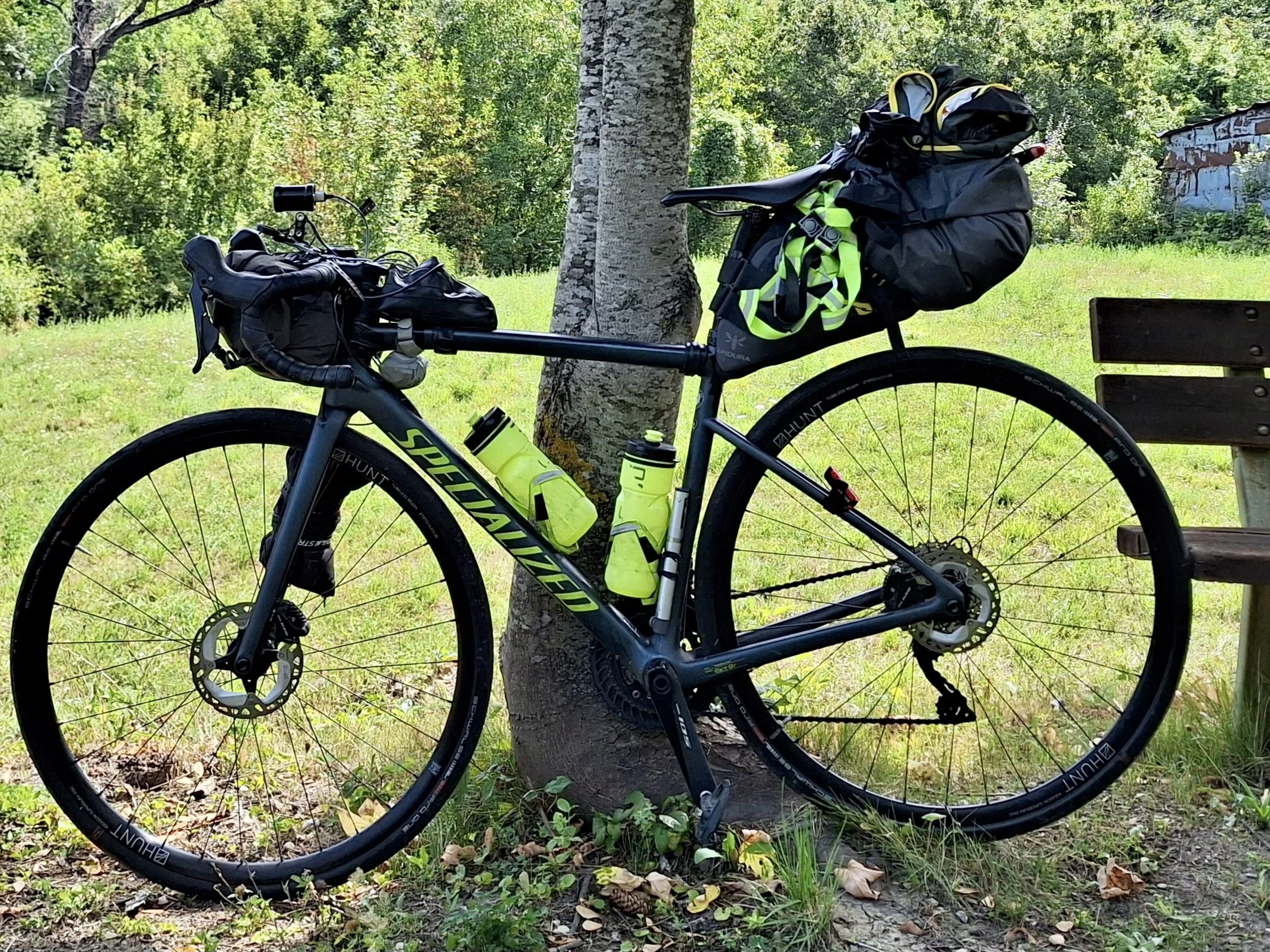Choosing your setup
What kind of bike? What kind of bags? Where to even begin?
You can read 50 guides, create the perfect spreadsheet… The bottom line is: only trial and error will get you to your ideal setup. If someone tells you to copy their setup exactly because they have found the universal answer, run away!
Choosing a bike
The best bike to use for your next trip might well be the one you already own. Ask yourself whether your current machine can be made up to the task. If you need to buy a bike, here are a few pointers:
What surface are you going to ride on?
Mostly or only tarmac → road bike
Tarmac and gravel tracks → hybrid or gravel bike
Mostly off road → mountain bike
If you are looking for speed and multi-surface performance, a gravel bike is a good call.
If you are looking to travel and don’t care about your speed, a hybrid does a good job.
My hot take: gravel bikes are trendy but they don’t have to be your go-to or entry into the bike touring world. They are also typically more expensive than hybrid bikes. If you are not a light packer, a hybrid is more likely to accommodate medium-to-large panniers. Heavy packing on a gravel bike often means lots of small bags, i.e. more faff, and you can end up taking more time to pack, unpack, and find things. In the end, your overall speed might be similar to a hybrid rider with easy access to their kit.
Shoutout to the drivetrain
Choosing the right bike may not be as crucial as choosing the right drivetrain. Ride a bike on its own or fully loaded, and the same gear might feel twice as tough. If a heavy load or lots of climbing is involved, make sure to have plenty of low, easy gears to keep your legs spinning uphill and your knees ache-free.
Cycle-touring vs bikepacking
Typically, we refer to the classic style of ‘cycle-touring’ for bikes laden with panniers: at least one pannier on either side of the rear rack, and possibly front panniers for longer trips.
A bikepacking setup involves attaching bags (typically a higher number of smaller bags) line with the frame. Instead of panniers, you may have a saddle bag, a frame bag and a handlebar bag, as well as smaller bags here and there.
Classic cycle touring, lightweight bikepacking, and everything in between
Cycle-touring panniers:
Pros
High carrying capacity (my multi-month setup has a capacity of over 230L)
Ease of access: you can open one of your big bags, shove the entire length of your arm down it and rummage through to find a particular item, close up the bag and go.
Cost: for the same carrying capacity, a couple of panniers will be cheaper than buying several bikepacking bags
Cons:
Speed: having bags on the side of your bike adds drag and will affect your average speed
Space: you won’t be able to cycle on narrow single tracks due to the width of the setup
Best suited for: longer trips, trips across seasons necessitating more gear, campers and comfort lovers
Bikepacking setup:
Pros:
Better aerodynamics: the bags don’t stick out on the side, adding less drag than panniers
More lightweight: the bags themselves tend to be lighter and since overall capacity is lower, the setup will be lighter
No mounting points or racks needed
Cons:
Fiddly: some bags, like frame bags, can always stay on the bike and offer easy access. However, saddle bags and handlebar bags don’t offer the same advantage. To avoid any rubbing on my rear wheel, I personally have to remove and repack my saddle bag every time I retrieve an item from it.
Lower overall carrying capacity
In the long-run, damage to the frame due to rub unless the frame is protected
Typically more fragile than panniers
Best suited for: shorter trips, bivvying or hotel bikepacking, minimalist riders
Practical examples
Here are some of my trips and respective setups, showing the variety of combinations I’ve tried over the years.
Each trip was different, and so each setup was different. Same rider, same riding style, different circumstances.
First ever cycling trip:
Cambridge to Henley via London
Setup: my town bike, a steel three-speed Sturmey-Archer from the 1980s. A big backpack, no helmet, route planning with Google maps. The ‘How not to do it’
Surface: road
Second ever cycling trip:
8,000km through South America, including a good chunk in the Andes.
Setup: A big sturdy hybrid bike with a front and a rear rack, four panniers, a handlebar bag, a waterproof bag strapped onto the rear rack for extra storage. Lots of tiny gears
Surface: mixed, a lot of off-road
London-Paris, 340km over two days
1980s Vintage steel frame, modified with a modern 11-28 cassette to add some easier gears. Carradice saddle bag.
Surface: road
Tour of the Massif Central (France)
1,000km in the mountains.
Carbon road bike, Carradice saddle bag and Ortlieb handlebar bag
Surface: road
Paris-Prague
1,300km on my hybrid tourer, this time with just a rear rack and two panniers
Surface: road
A summer of meandering in France and Italy:
Carbon road bike, Apidura 17L saddle bag and DIY handlebar bag (waterproof bag + straps)
Surface: road
Tour of Western Europe
9,500km through the UK, Ireland, France and Spain.
Same setup as South America, but with a new dynamo hub in my front wheel
Surface: mixed
Exploring Spain (Catalonia, Valencia, Mallorca over three months)
Steel frame gravel bike, dynamo hub. Apidura saddle bag, stem bag, DIY snack pouches made from old inner tubes, occasional backpack
Surfaces: Mixed, lots of off-road
1,600km over three weeks in Quebec:
Steel frame gravel bike, dynamo hub, Apidura saddle bag, Ortlieb handlebar bag, DIY snack pouches made from old inner tubes, two stem bags, tent mounted on the fork, two extra water bottles used as storage
Surface: mixed










